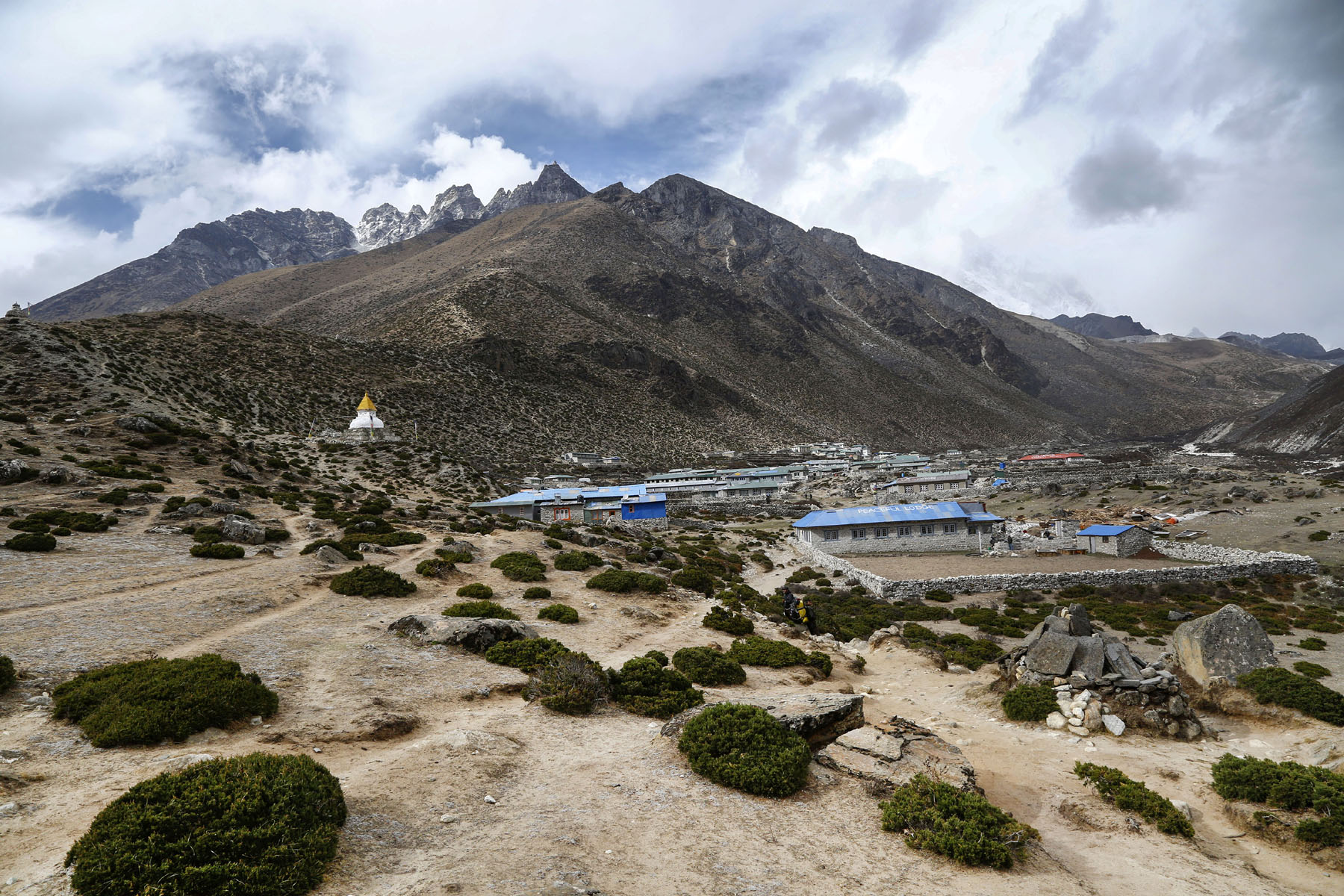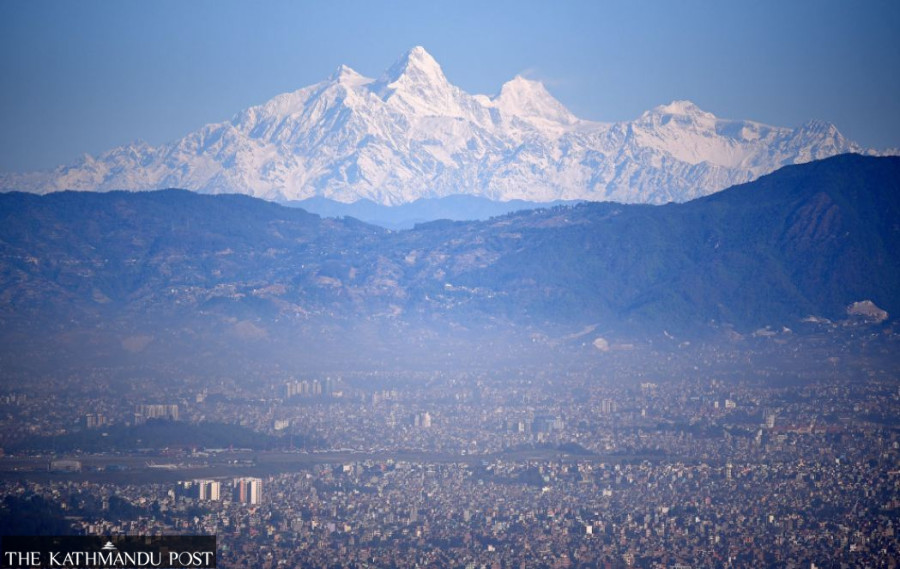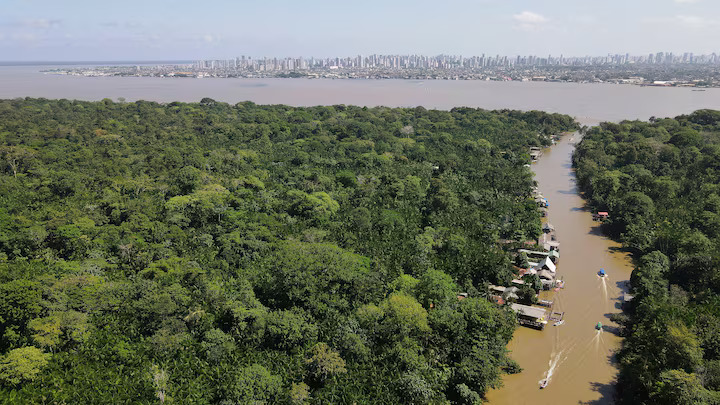Climate & Environment
What new vegetation growth high in the Himalayas means
As rising temperatures expose land under snow in the mountains, the treeline is moving up. A new study reveals the alarming situation but scientists are unable to say exactly what the consequences will be.
Chandan Kumar Mandal
A new study showing shrubs and grasses springing up at high altitudes in the Himalayas, including the Mount Everest region, has raised concerns in the scientific community. The latest research, led by scientists from the University of Exeter, in the United Kingdom, has concluded that plants are living in higher ecological zones of the Himalayas than they did 25 years ago in the highest region of the planet. The researchers used NASA’s Landsat satellite data from 1993 to 2018 to assess the presence of vegetation in the mountains and then analysed how plant life had changed in a period of two and a half decades. Researchers found out that the region has experienced small but significant growth of subnival vegetation, which includes small and dwarf plants like grasses, shrubs and mosses.
What exactly is the finding?
Scientists used satellite data to establish increases in subnival vegetation—small grasses and shrubs—between the tree line and snow line in the Himalayas. Tree line is the edge of the habitat at which trees are capable of growing and the snow line is the boundary between snow-covered land and snow-free land. According to Dr Karen Anderson from Exeter University, who is lead author of the report, the strongest trend in increased vegetation cover was between 5,000 metres and 5,500 metres altitude. "At higher elevations, the expansion was strong on flatter areas while at lower levels that has been observed on steeper slopes,” Anderson told the BBC.
How did the scientists carry out the research?
To examine the spatial expansion of vegetation in the mountain zone, researchers had divided the area into four brackets between 4,150m and 6,000m. The vegetation increase was significant in all the four brackets of the zone—4,150–4,500m; 4,500–5,000m; 5,000–5,500m; and 5,500–6,000m—above sea levels, although results varied as per the elevation and places.
Although the research has not investigated the reason behind the increase of vegetation in the subnival region—the geographical patch between treeline and the snow line, scientists having expertise in the field attribute climate change as the reason behind the change.
“The situation as projected in the research finding is the impact of climate change on vegetation,” said Achyut Tiwari, assistant professor at the Central Department of Botany, Tribhuvan University. “The rising temperature resulting in the massive retreat of the glacier and melting of snows have exposed the area covered by the snow. As a result, plants are colonising now.”
Studies conducted over the years have suggested that mountain ecosystems are highly vulnerable to climate-induced vegetational shifts.
Tiwari, who has conducted similar studies in the upper Himalayas of Nepal and Tibet, says treeline has been moving up in the mountain region where plants did not grow earlier.
“Plants could not grow above a fixed treeline which can be approximately 4,000m-4,200m because of low temperatures. But now plants like rhododendron are moving up because of favourable temperatures,” said Tiwari.
-of-typical-subnival-ecosystems-in-the-Sagarmatha-National-Park%2C-Nepal.-(a)-A-view-across-the-valley-with-the-village-of-Dingboche-(4%2C410-m-a.s.l.)-below%2C-taken-from-an-elevation.jpg)
Photographs (by authors K Anderson; D Jones, Global Change Biology) of typical subnival ecosystems in the Sagarmatha National Park, Nepal. (a) A view across the valley with the village of Dingboche (4,410mabove sea level) below, taken from an elevation of around 4,900m. Viewpoints (b) and (c) are overlaid. (b) The view east, looking towards the base of Ama Dablam, at around 4,700m, whilst (c) is the viewtowards Chola Glacier (beneath Cholatse peak) at 4,700m looking west. Clearly visible are dwarf shrubs including the species Rhododendron anthopogon.
What does this new phenomenon mean?
At a time when the melting of Himalayan glaciers due to climate change is alarming, this new phenomenon of plant life expanding at high altitudes could have devastating effects, according to scientists. The melting of the Himalayan glaciers has doubled since the turn of the century. More than a quarter of all ice has been lost over the last four decades. Scientists have already warned about a “devastating” future for the region, upon which more than a billion people depend for regular water, due to the accelerating loss of ice. The new finding suggests the region’s ecosystems are highly vulnerable to climate-induced shifts in vegetation.
According to Shalik Ram Sigdel, a researcher with the Chinese Academy of Sciences, although the warming climate is prevalent at the global scale, the rate is higher in the Himalayas than the global average. And such rising temperatures lead to upward shifts of vegetation.
“The Himalayan region is home to several endemic species [both plants and animals] and some species have very short distribution range and are highly vulnerable to changing climate or change in land use pattern or invasion of alien species,” Sigdel told the Post. “Hence, it is important to pay attention to conserving the highly valuable alpine ecosystem.”
Is it purely a climate change-induced phenomenon?
According to Tiwari, temperature rise is not the only factor behind such a surge in vegetation at high altitudes. Sigdel agrees. Several studies have previously indicated alpine plants show a complex response to the changing climate. “Temperature alone cannot explain the species distribution and ecosystem functioning,” said Sigdel. “Warming temperatures may cause drier conditions due to increasing evaporation. Other studies have shown tree growth at the upper limit is controlled by moisture availability rather than temperature.” Studies have already proved that climate change is supporting growth of invasive and alien plants in the country, which is experiencing the wrath of changing climate in multiple sectors and approaching towards an even harsher future. Other studies have also shown that treelines are sensitive to changing climatic conditions, especially temperature increases. The rise in temperatures in the mountain region suggests treeline advancing to higher elevations.
Has there been any study by Nepali scientists?
Yes. Sigdel himself was involved in a study , focusing on six sites—Kanchenjunga, Everest, Langtang, Manang, Jumla and Humla. The study found that treeline had shifted upward in response to recent climate warming. But the rate of upward shift was higher in the wettest eastern region (up to 0.37m/yr) than in western region (no change) during the past 150 years, suggesting that its ascent rate was facilitated by moisture availability. “We also observed noticeable upward shifts of treeline at the Everest region (upto 0.34 m/year) which is still lower than other mountains around the globe,” said Sigdel. According to researchers like Tiwari and Sigdel, increasing temperatures caused faster melting of snow and increased runoff water. The sufficient availability of water after the melting of snow supports the growth of plants.
.jpg)
Will the consequences be severe?
No one knows exactly—not even the scientists who wrote the report. "We don't know what the impact is—it may be that plants trap snow and might cause it to melt more slowly. It might be that the plants cause the snow to melt more quickly," Anderson told CNN. It, however, is a fact that 1.4 billion people of the Hindu Kush Himalayan region, which extends across all or part of eight countries, from Afghanistan in the west to Myanmar in the east, depend on water collected in the region. According to the research, changes to water cycles and supplies could have far-reaching impacts on communities in different countries.
Expansion of vegetation in the subnival ecosystem—which lies between the treeline and snow line—could have effects on the water supplies and lead to hydro-climatic extreme events like the flooding in the Hindu Kush Himalayan (HKH) region.
The worry for the future stems from the fact that the research focused subnival ecosystem covers 5 to 15 times the area of permanent glaciers and snow in the HKH region. And, any alteration in the high-altitude ecology could potentially impact the water cycles impacting millions of people living downstream. “Increasing greenery is not always good news,” said Tiwari. “Areas covered with snow are now empty. With the increased vegetation, there will be growth in the melting of snow, leading to hydro-climatic events like floods.”
According to Tiwari, earlier, snow, which is water in solid form, used to be there covering the land for months and blocking plants. “Now, as snow melts faster, the land in the mountains is open and exposed.” Plants and the water cycle are interconnected. Wherever plants grow, they change the way the water cycle behaves in those areas. Scientists associated with the study have pointed out the need for further detailed studies for understanding how vegetation in the high-altitude zone reacts with soil and snow.
“As the researchers have claimed, expansion of shrubs and grasses at subnival zone causes quicker snowmelt and increased risk of flooding,” said Sigdel. “But it needs further validation to understand how plants interact with soil and snow under warming and drying climate conditions.”




 13.12°C Kathmandu
13.12°C Kathmandu





